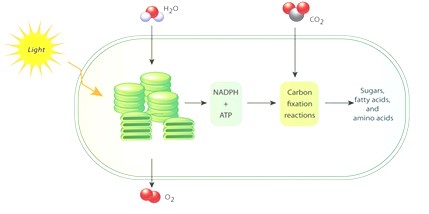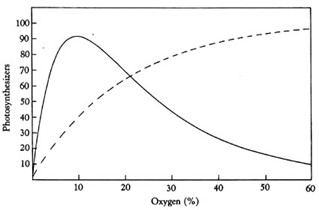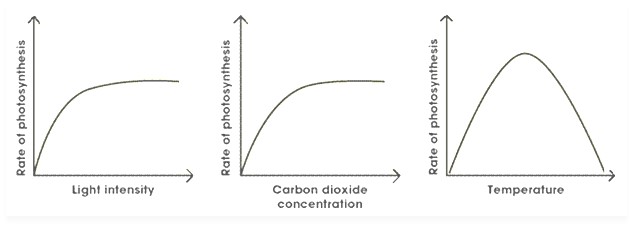Photosynthesis is when green plants or autotrophs harness light energy from the sun and convert it to chemical energy. Photosynthesis is a fundamental process in every organism’s life. Therefore, the researchers need to understand how it occurs, which plants exhibit the process, and the importance of the same process in the ecosystem (Lee and Kim 114255). It would be demeaning to underestimate the role of photosynthesis on earth’s life. If photosynthesis stopped, there would be no life on earth. However, the chemosynthetic bacteria that utilize energy directly from the sun to make their food without the need to convert it to chemical energy as it is in green plants would also survive (Yazdanifardet al.112927). This research paper explains the photosynthetic process, effects, and importance of the same in an environment.
Introduction
It is exceptionally vital to understand the photosynthetic process irrespective of whether it is part of one’s curriculum. Photosynthesis is the process by which green plants and some bacteria harness and convert light energy from the sun to make their food in the presence of Chlorophyll. Green Plants entirely depend on the photosynthetic process to make their food The photosynthetic process is the core reason humans and other forms of life are on earth today. Water, Chlorophyll, carbon dioxide (Co2), soil, and sunlight are the main ingredients involved in a photosynthetic process. This topic explains the process of photosynthesis, its importance in human life, and the factors influencing the process.
Although the soil is indirectly engaged in photosynthesis, the plant does absorb some vital components found within the soil. Chlorophyll is a substance that is found in most plants and gives them their green hue. Photosynthesis is made possible by Chlorophyll found in plant leaves. The following response occurs throughout the food production process: 6 CO2 + 6 H2O → (in the presence of sunlight) C6H12O6 + 6 O2. Water, soil, and carbon dioxide are the three most significant non-living constituents involved in the process. When sunlight falls on a plant’s leaves, it begins to produce its “food,” which consists primarily of large amounts of sugars and carbohydrates. The plant then stores the ‘food’ and consumes some of it throughout the day. This procedure is repeated until the end of the day (until sunlight is available again) (Yu-He et al., 507).
Plants produce an abundance of ‘food,’ which people and other animals ingest through various sources, including fruits and vegetables. During the process of cellular respiration, animals and humans breathe out carbon dioxide. The plants then utilize this carbon dioxide to produce additional food. Plants receive water from the rainfall and the accumulated water table, while the sun gives light (radiant energy) every day. As a result, this procedure is nothing more than a never-ending circle.

Figure; 1:00: Figure showing the photosynthetic process
The photosynthesis process usually occurs in two main phases. The Calvin Benson Cycle is the subsequent stage after the first stage of the light response. In summary, light reactions stage catch light energy and use it to create high-energy molecules, which are then used by the Calvin-Benson Cycle to capture carbon dioxide and make or produce carbohydrate precursors (Sharkey 250).
Light Reaction Phase of Photosynthesis
This is the first stage of the photosynthetic process. Here, sunlight energy is converted into potential energy. Because this step requires a lot of sunshine, it’s known as the light-reaction process/stage of photosynthesis. The light-dependent process creates oxygen by converting ADP and NADP+ into the energy carriers ATP and NADPH. The electron transport in Chlorophyll can be non-cyclic or cyclic during this conversion process (Irmawati and Indriyati 313).

Figure: 1:01: Light reaction stage in chloroplasts
Cyclic Phosphorylation: The cyclic flow of electrons, also known as cyclic phosphorylation, is an electron movement cycle that starts in the Chlorophyll with a pigment complex referred to as photosystem. It moves from the ferredoxin’s first acceptor to the ferredoxin’s second acceptor (iron-sulfur proteins). It is then translocated to a complex of double cytochromes, then to plastoquinone (a quinone molecule that is a constituent of the electron movement string in light reactions), and finally back to Chlorophyll (Huang et al.). The proton-motive force (PMF) generated by this electron transport chain causes H+ ions to be pumped through the membrane, resulting in a concentration gradient that provides energy for ATP production during chemiosmosis (movement of ions). In bacterial food production, the cyclic route is seen/visible.
Non-cyclic Phosphorylation: This process occurs in two stages in chlorophyll photosystems. In the initial step, photolysis, which means “light splitting,” breaks down one water molecule into two hydrogen ions, bisect of a molecule of oxygen, and two electrons. The double electrons obtained in this process are stored in photosystem II. Subsequently, the hydrogen ions and half-oxygen molecules are stored for eventual consumption (“A Novel Two-Step Water-Splitting Electrochemical Cycle for Hydrogen Production”). Eventually, a photon is absorbed by photosystem II, causing two electrons to be moved to the acceptor molecule. The electron deficit left is then filled by absorbing electrons from another water molecule. The electrons are then carried to plastoquinone from the earlier acceptor. The electrons are moved to plastocyanin, which produces the proton-motive force.
Calvin Benison Cycle
This is the light-independent stage and usually takes place in the stroma. The phrase “light-independent reactions” comes from the fact that these reactions require no presence of light to take place. The light-reaction stage’s end products are utilized in this cycle. Carbon fixation and reduction processes and ribulose 1.5- biphosphate regeneration are the three steps involved in the light-reaction scene. Water and glyceraldehyde-3-phosphate are the initial products of the Calvin-Benison cycle. The three phosphate molecules of glyceraldehydes that have exited the process are subsequently used to produce many carbohydrates (Sun et al. 232).
Although this process occurs daily, even without human knowledge, several factors affect how it works. Some of the factors affecting photosynthesis include; carbon dioxide concentration, temperature, oxygen, and light intensity, to mention but a few. Photosynthesis thrives when oxygen levels are at their highest. Oxygen is required in photorespiration, and the by-product of photorespiration produces Co2 needed for photosynthesis. Additionally, the energy generated during oxygen respiration is required for the photosynthetic process. The rise of oxygen levels above the plant’s optimum required level, on the other hand, causes photosynthesis to be inhibited (Sekerci and Petrovskii 201).

Table 1:00: Image source: Indiana.edu): Photosynthesis increases with an increase in oxygen concentration.
Photosynthesis is higher at optimum temperature. It is established knowledge that all metabolic and biological activities occur optimally within a specific range of temperature. This also applies to photosynthesis. When CO2 and light energy are not limiting variables, the rate of photosynthesis increases with increasing temperatures until the plant attains its maximal level. The enzymes are denatured or completely vandalized beyond the optimum levels on both sides of the normal range, and photosynthesis ceases (Liu 603)

Table 1.02 🙁 Image sources: showing-biology-igcse.weeble.com) how carbon dioxide, temperature, and light intensity affect photosynthesis.
Conclusion
Having learned what photosynthesis is, how it works, and its importance to humans and every living organism, it is imperative to remember that this is a natural process without our knowledge daily. When it comes to the science of things, it’s something to wonder about. One may confidently say that this is one of nature’s best processes to understand better how it operates. Humans take in oxygen-rich air through our lungs. For ourselves and all other animals to survive, we need oxygen. When we take in oxygen, our bodies combine it with sugar we acquire from food to make energy, which allows us to be active. Respiration is the name for this procedure. Both power and gas are known as carbon dioxide, are created during respiration. When humans exhale, the carbon dioxide we make is discharged into the atmosphere.
On the other hand, plants can take in this carbon dioxide that people cannot consume and generate their energy. Plants are referred to be producers because they develop their power without the need to eat. This way, photosynthesis will be continuous, and energy flow in the ecosystem will be unending.



